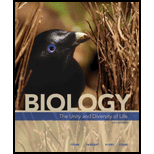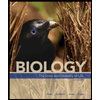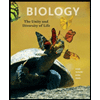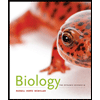
Concept explainers
To determine: The most common type of birth defect in the single-birth group.
Introduction: During the gestation period, the mother can have single birth or multiple births. Single birth is where the mother carries only one fetus during the gestation period in the womb. Multiple births are where more than one fetus is carried during the gestation period, such as twins, triplets, quadruplets, and more. Carrying more than one fetus in the womb results in insufficient supply of nutrient to the developing fetus. These fetuses become still-born or born with abnormalities.
Explanation of Solution
Scientist YT studied the correlation between birth defects and multiple births in City F from 1996 to 2000. The scientist calculated the relative risk of birth defect with factors including type of birth, maternal age, economy, race, and medical care provided during pregnancy. The relative risks were calculated using a scale of 1. Relative risk lesser than 1 indicate that multiple births possess less risk of the occurrence of respective birth defects. Relative risk greater than 1 indicates that multiple births do possess a greater risk of the same. The generated data are given in Fig. 42.16.
According to the study, heart defects were the most common type of birth defect in the single-birth group, which may be due to genetic disorders.
The most common type of birth defect in the single-birth group is heart defects.
Want to see more full solutions like this?
Chapter 42 Solutions
Biology: The Unity and Diversity of Life (MindTap Course List)
- Birth Defects and Multiple Births A woman who carries multiple offspring at the same time increases the risk of some birth defects. FIGURE 42.18 shows the results of Yiwei Tang's study of birth defects reported in Florida from 1W6 to 2000. Tang compared the incidence of various defects among single and multiple births. She calculated the relative risk for each type of defect based on type of birth, and corrected for other differences that might increase risk such as maternal age, income, race, and medical care during pregnancy. A relative risk of less than 1 means that multiple births pose less risk of that defect occurring. A relative risk greater than 1 means multiples are more likely to have a defect. FIGURE 42.18 Prevalence, per 10,000 live births, of various types of birth defects among multiple aria single births. Relative risk for each defect is given after researches adjusted for the motor's age, race, previous adverse pregnancy experience, education, Medicaid participation during pregnancy, as well as the infant's sex and number of siblings. 4. Does a multiple pregnancy increase the relative risk of chromosomal defects in offspring?arrow_forward_______ Which of the following statements is incorrect? a. Rates of preterm delivery and low birth-weight in the United States are trending downward but remain higher in non-Hispanic Black American women and infants than in other groups. b. Reductions in the proportion of infants born small, early, or both would clearly decrease infant mortality. c. The international ranking of the United States for infant mortality rate has been improving since the beginning of the twenty-first century. d. National health objectives for pregnant women and newborns focus on the reduction of low birth-weight, preterm delivery, and infant mortality.arrow_forwardNormal childbirth is driven by a positive feedback loop. Analyze the given diagram and discuss in detail how the positive feedback loop controls child birth.arrow_forward
- Some drugs have the potential to cause birth defects if taken by pregnant women. Most women know the dangers of alcohol and drugs of abuse while pregnant but in 2023,Center’s for Disease control and Prevention reported about 70% of pregnant women take at least one prescription drug and many take some type of herbal remedy and think over the counter drugs are safe to take. 1. Just because something is found on the internet, it is necessary true and reliable?arrow_forwardFill in the blank: A human offspring is called a(an) ___________________ until the end of the eighth week of development.arrow_forwardInfertility strikes both men and women. Describe in a summary the biological causes that impair the process of conception in both males and females. Besides mentioning specific reasons of infertility in males and females, you need to include in your answer other cause(s) that might be the result of a combination of factors originating from both men and women.arrow_forward
- Implications of the article (premature and preterm premature rupture of membranes in adolescent compared to adult pregnancy) in nursing education, nursing practice, nursing research, and as a student?arrow_forwardIn stage 1 of labor, during active phase the cervix dilates? 4-7 cm 1-3 cm 8-10 cm 7-10 cmarrow_forwardWhich of the following scenarios does NOT describe an event that leads to the conceptions of twins? Select one: A. two eggs are fertilized by two sperm cells, resulting in a fraternal twin. B. High levels of FSH stimulate the maturation of three ovums. C. Two eggs are fertilized by one sperm cell, resulting in a monozygotic twin. D. One egg is fertilized by one sperm but divides into two zygotes, resulting in two babies of the same gender.arrow_forward
- why is it important to know the prevalence of premature rupture of membranes in adolescent compared to adult pregnancyarrow_forwardCurrently, American women are dying from pregnancy-related complications more than women in other developed countries. Why do you think that the maternal mortality rate is higher in the United States than in other nations?arrow_forwardfill the sentence? ........is an increase in the number of normal cells of an organ or tissue. for example, increase in the size of the breats during pregenancy, increase in thicker of endometrium during menstrul cycle.arrow_forward
 Biology: The Unity and Diversity of Life (MindTap...BiologyISBN:9781337408332Author:Cecie Starr, Ralph Taggart, Christine Evers, Lisa StarrPublisher:Cengage Learning
Biology: The Unity and Diversity of Life (MindTap...BiologyISBN:9781337408332Author:Cecie Starr, Ralph Taggart, Christine Evers, Lisa StarrPublisher:Cengage Learning Biology: The Unity and Diversity of Life (MindTap...BiologyISBN:9781305073951Author:Cecie Starr, Ralph Taggart, Christine Evers, Lisa StarrPublisher:Cengage Learning
Biology: The Unity and Diversity of Life (MindTap...BiologyISBN:9781305073951Author:Cecie Starr, Ralph Taggart, Christine Evers, Lisa StarrPublisher:Cengage Learning Biology: The Dynamic Science (MindTap Course List)BiologyISBN:9781305389892Author:Peter J. Russell, Paul E. Hertz, Beverly McMillanPublisher:Cengage Learning
Biology: The Dynamic Science (MindTap Course List)BiologyISBN:9781305389892Author:Peter J. Russell, Paul E. Hertz, Beverly McMillanPublisher:Cengage Learning Nutrition Through The Life CycleHealth & NutritionISBN:9781337919333Author:Brown, Judith E.Publisher:Cengage Learning,
Nutrition Through The Life CycleHealth & NutritionISBN:9781337919333Author:Brown, Judith E.Publisher:Cengage Learning, Human Heredity: Principles and Issues (MindTap Co...BiologyISBN:9781305251052Author:Michael CummingsPublisher:Cengage Learning
Human Heredity: Principles and Issues (MindTap Co...BiologyISBN:9781305251052Author:Michael CummingsPublisher:Cengage Learning




